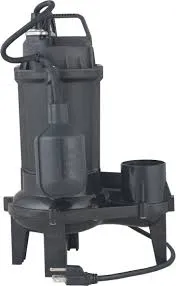English
- Afrikaans
- Albanian
- Amharic
- Arabic
- Armenian
- Azerbaijani
- Basque
- Belarusian
- Bengali
- Bosnian
- Bulgarian
- Catalan
- Cebuano
- Corsican
- Croatian
- Czech
- Danish
- Dutch
- English
- Esperanto
- Estonian
- Finnish
- French
- Frisian
- Galician
- Georgian
- German
- Greek
- Gujarati
- Haitian Creole
- hausa
- hawaiian
- Hebrew
- Hindi
- Miao
- Hungarian
- Icelandic
- igbo
- Indonesian
- irish
- Italian
- Japanese
- Javanese
- Kannada
- kazakh
- Khmer
- Rwandese
- Korean
- Kurdish
- Kyrgyz
- Lao
- Latin
- Latvian
- Lithuanian
- Luxembourgish
- Macedonian
- Malgashi
- Malay
- Malayalam
- Maltese
- Maori
- Marathi
- Mongolian
- Myanmar
- Nepali
- Norwegian
- Norwegian
- Occitan
- Pashto
- Persian
- Polish
- Portuguese
- Punjabi
- Romanian
- Russian
- Samoan
- Scottish Gaelic
- Serbian
- Sesotho
- Shona
- Sindhi
- Sinhala
- Slovak
- Slovenian
- Somali
- Spanish
- Sundanese
- Swahili
- Swedish
- Tagalog
- Tajik
- Tamil
- Tatar
- Telugu
- Thai
- Turkish
- Turkmen
- Ukrainian
- Urdu
- Uighur
- Uzbek
- Vietnamese
- Welsh
- Bantu
- Yiddish
- Yoruba
- Zulu
Telephone: +86 13120555503
Email: frank@cypump.com
Oct . 10, 2024 04:11 Back to list
Understanding the Functionality and Importance of Sewage Ejector Systems in Waste Management
Understanding Sewage Ejector Systems
A sewage ejector system is a crucial component in modern plumbing, especially for properties that are below the level of the municipal sewer line. These systems efficiently transport wastewater, particularly from basements or lower-lying areas, ensuring that sewage is properly channeled away and preventing potential flooding. This article explores the functionality, components, and considerations of sewage ejector systems.
How Sewage Ejector Systems Work
At its core, a sewage ejector system utilizes a pump to move wastewater from lower elevations to a higher level where it can connect to the main sewer line. The system typically comprises a sewage basin, a pump, and a discharge pipe. Wastewater from toilets, sinks, and appliances flows into the sewage basin, which serves as a collection point. Once the wastewater in the basin reaches a predetermined level, the pump activates and ejects the sewage through the discharge pipe, propelling it out of the system and into the municipal sewer.
Key Components
1. Sewage Basin This is a watertight container that collects wastewater before it is pumped away. The basin is equipped with a lid and has vents to relieve gas buildup.
2. Pump The heart of the system, the pump is usually a submersible unit that is designed to handle solids and debris commonly found in sewage. It is critical for the pump to be durable and reliable, often featuring a float switch that activates the pump when sewage reaches a certain level.
sewage ejector system

3. Discharge Pipe Once the wastewater is pumped out, it travels through a discharge pipe, which channels the sewage towards the municipal sewer line or a septic system. This pipe is generally sloped to facilitate the flow of waste and prevent clogging.
4. Check Valve This component prevents backflow, ensuring that once the sewage is pumped out, it does not flow back into the basin.
Considerations for Installation and Maintenance
When installing a sewage ejector system, several factors should be taken into account. Firstly, local plumbing codes and regulations must be followed to ensure compliance and safety. It's also essential to choose the right size and type of pump based on the expected wastewater volume and the vertical distance the sewage needs to be lifted.
Regular maintenance of the sewage ejector system is vital to its longevity and effectiveness. Homeowners should routinely inspect the pump for any signs of wear and tear, check the float switches, and ensure that the discharge pipe is clear of obstructions. Additionally, homeowners should be mindful of what goes down the drains, avoiding flushing non-biodegradable materials that can clog the system.
Conclusion
Sewage ejector systems play an indispensable role in managing wastewater effectively, particularly in homes and facilities located below municipal sewer lines. By understanding the components, functionality, and best practices for maintenance, homeowners can ensure their systems operate efficiently and prevent costly plumbing issues in the future. Investing in a quality sewage ejector system is not only a matter of convenience but also a necessary step in preserving property value and hygiene.
-
ISG Series Vertical Pipeline Pump - Chi Yuan Pumps Co., LTD.|High Efficiency, Energy Saving, Low Noise
NewsJul.30,2025
-
ISG Series Vertical Pipeline Pump- Chi Yuan Pumps|High Efficiency&Low Noise
NewsJul.30,2025
-
ISG Series Vertical Pipeline Pump-Chi Yuan Pumps Co., LTD.|High Efficiency&Energy Conservation
NewsJul.30,2025
-
ISG Series Vertical Pipeline Pump - Chi Yuan Pumps Co., LTD.|Advanced Hydraulic Design&Energy-Efficient Solutions
NewsJul.30,2025
-
ISG Series Vertical Pipeline Pump - Chi Yuan Pumps Co., LTD.
NewsJul.30,2025
-
ISG Series Vertical Pipeline Pump - Chi Yuan Pumps Co., LTD.|energy-efficient fluid handling&industrial durability
NewsJul.30,2025










